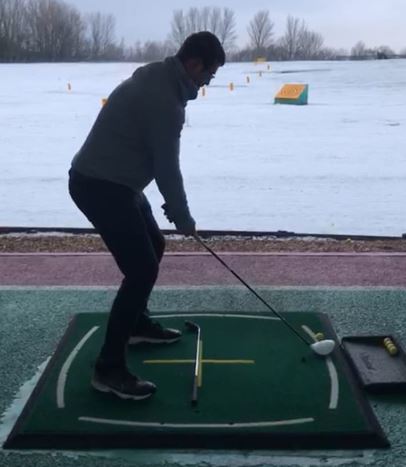What Is A Forecaddie In Golf – Everything You Need To Know
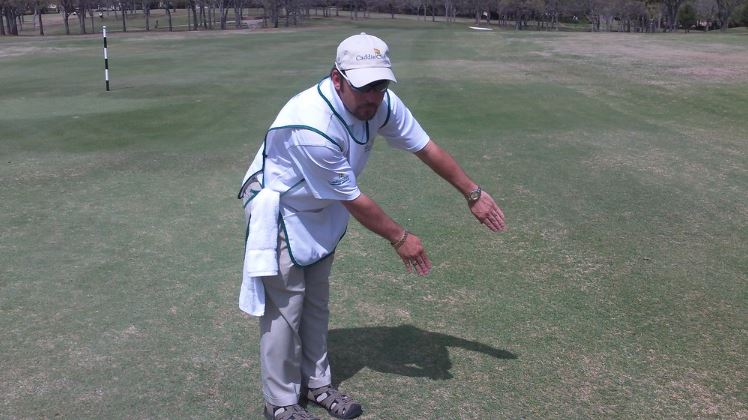
Finding your ball can become a hassle on a tough day and slow down the field, raising your blood pressure and your playing partners.
This is why you should consider a Forecaddie during your next game, especially if at an unfamiliar golf course.
In this post, I discuss what a Forecaddie is, their key responsibilities, and the intricacies of the job.
In addition, I will touch on the differences between a forecaddie and a regular caddy who carries your clubs and provides tips on each shot.
Overview Of What A Forecaddie is and does
A forecaddie, as stated by the rules of Golf, is an individual employed by the club Committee to identify the location of a golf ball during play.
Forecaddies are typically independent contractors who often work in peak season times.
There you have it. During professional golf tournaments, a forecaddie performs the specific duty of watching for golf balls.
However, these individuals are volunteers from local golf clubs or unions who are not paid for their work.
However, during a casual round at your local golf course, you may hire a regular caddy who performs the duties of a forecaddie.
Golfers who prefer the luxury of a caddie carrying their bag may see no value in hiring a forecaddie specifically for the round.
If there is only one caddie with your group, then the rest of the guys may agree to tip them extra to help watch everybody’s golf balls.
Conversely, if you take carts at unfamiliar links, it behooves you to acquire the services of a fore-caddie to show you the way.
Forecaddie Vs Caddy – What’s The Difference?
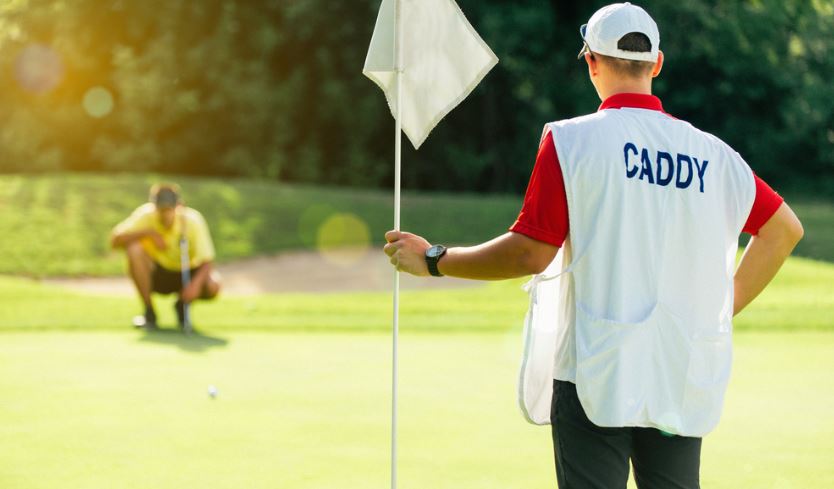
The most evident difference is that a caddie is a more personalized service to one player. A forecaddie is responsible for the entire group of players.
The next noteworthy difference arises in their responsibilities. The Forecaddie’s main task is to track and locate the golf balls of the whole group and maintain a swift speed of play.
On the other hand, a caddie has a lot more on his plate. Caddies have full authority over the golf equipment as they carry the golf bag and organize and clean the grooves before the round kicks off.
They continue to clean and organize the golf clubs, replace divots, rake bunkers and control the flagstick when players are on the dancefloor.
Most importantly, they provide thoughtful advice throughout the hole and on the green to assist us as best possible.
What Are A Forecaddies Duties?
The Forecaddie’s primary responsibility is to maintain the speed of play throughout the golf course by tracking each ball position and showing them precisely where it ended up.
For example, say that a forecaddie is in charge of a 4-ball group. If one player hits the ball into the heavy left rough, he needs to get to this position as soon as possible to find the ball and mark it as fast as he can.
After fulfilling this duty, he can focus on the other three shots.
This is more common during professional Tournament play than during a recreational round with your buddies. Y
ou can see them on TV carrying specific flags or indicators. However, they could be a professional golf marshal with more than just this responsibility.
Do You Need A Forecaddie To Play?
No, you do not need the services of a forecaddie.
If you hire a regular caddie, it will suffice and fulfill enough responsibilities to keep you covered.
If you are invited to unfamiliar golf courses outside your local region, ponder on the services of a forecaddie.
It is incredibly wise for the group to employ their services as they have the understanding and local knowledge to assist our score and round.
In an Amateur setting, the forecaddie can assist you with vital information concerning the layout and better places to position your ball.
You will also be covered on the green as he can aid each player with his local opinion and expert green reading knowledge.
How Do You Use A Forecaddie?
As a professional golfer, you do not need to worry about utilizing a Forecaddie as he is an outside agent employed by the Tournament’s organization and understands his job.
When playing a recreational round with your buddies, you can use a forecaddie at your own discretion.
This depends on how the rules are enforced at your golf course. In my experience, a forecaddie is a regular caddie with different responsibilities, often not required to carry clubs but to fulfill the other standard duties.
What Hand Signals Do They Use?
- Play away – Rotate the right hand in an anti-clockwise direction and point the left hand towards the left side. Players can proceed
- Stop – Hands in the air with the palms to the golfer. This demonstrates that the golfer should wait until the Forecaddie says so.
- Safe – Moves both hands from side to side to show that the ball is secure.
- Missed the shot – Position both hands over the eyes to show that he missed the shot completely
- Out of bounds – The Forecaddie moves their hands from above the head to their right side. The ball is out of bounds.
- Provisional shot – Cross the arms across the chest to show that the golfer must play a Provisional shot.
- Ball in long rough – Joins both hands and points to the left side to show the ball is in the tall grass.
- Penalty area – Moves the right hand downwards towards the right side to show the ball is in the penalty area.
Does A Forecaddie Read Putts?
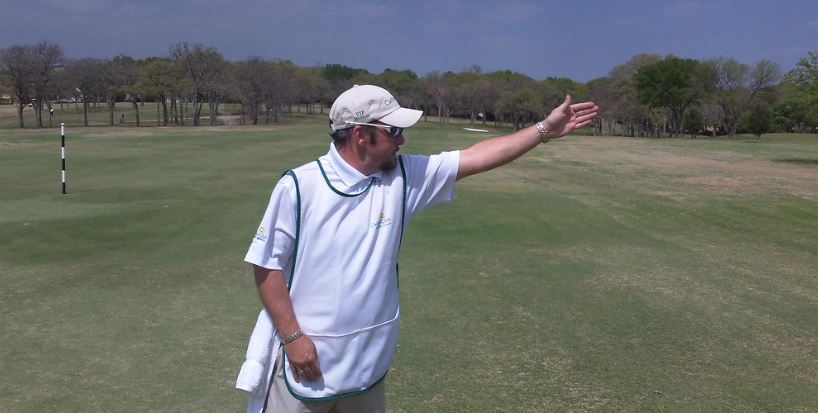
In a professional setting and under the strict USGA and R&A rules, a forecaddie is only responsible for tracking and marking the golf balls of each player in the group.
However, you may have seen normal caddies acting as forecaddies in a recreational golf round or competition.
In this case, the acting Forecaddie will pull off the same job and can assist the players with cleaning clubs, raking bunkers, and reading putts on the dancefloor.
Do You Have To Tip A Forecaddie?
If you employ a forecaddie at your home golf course, you will pay a fee for this service.
The job is relatively simple, so you should use your discretion and tip them depending on the quality of their service, friendliness, and course knowledge.
The PGA suggests tipping a forecaddie between $50 to $100 for each group. I typically work it at an average of $20 to $25 per player.
Conversely, you are unlikely to see Professional players tipping forecaddies hired by the Tournament organizers.
These individuals are volunteers and are not compensated by the Tour or the players.
How Much Do They Make?
As mentioned previously, a forecaddie can earn between $50 to $100 a round depending on the golf Course fee plus the tip they receive from their clients.
During peak season, a forecaddie could do one round a day for a few days each week of the month.
If we put their final wage at $75 to $100 for 4 days a week, the Forecaddie can rake in between $1200 to $1600 per month in peak season.
This is a standard projection of a forecaddies earnings during the high season. In the non-peak season, they may find fewer golf rounds a week.
Generally, caddies and forecaddies work seasonally and have multiple jobs depending on the traffic flowing through their golf course.
What Are The Origins Of Forecaddies?
The origins of the term forecaddie are not perfectly clear. However, a theory suggests that players used to warn the assistant standing ahead by shouting, ‘Forecaddie.’
This helped the Forecaddie to follow the ball and mark the ball with the flag.
Since golf balls were expensive during these times, a Forecaddie helped our forefathers reduce losses and equipment expenses.
The first report of a ‘fore-cady’ occurred in the rules of the Thistle Golf Club in 1875.
It recalled a conversation that Mr. Tytler from Woodhouselee had with a gentleman Tytler referred to as a ‘fore-cady’ for the Duke of York in 1681.
These days we simply shout ‘Fore’ to warn our fellow players of wayward shots, or at least some of us do.
There are many theories about the origins of the word ‘Fore,’ one being that it is abbreviated from ‘fore-caddie.’
However, other scholars suggest the term stems from the era of musket warfare.
Soldiers on the front line were apparently warned to keep their heads down when fusillades were launched from behind.
However, in my mind, the ‘fore-caddie theory makes more logical sense.
What Are The Other Types Of Caddies?
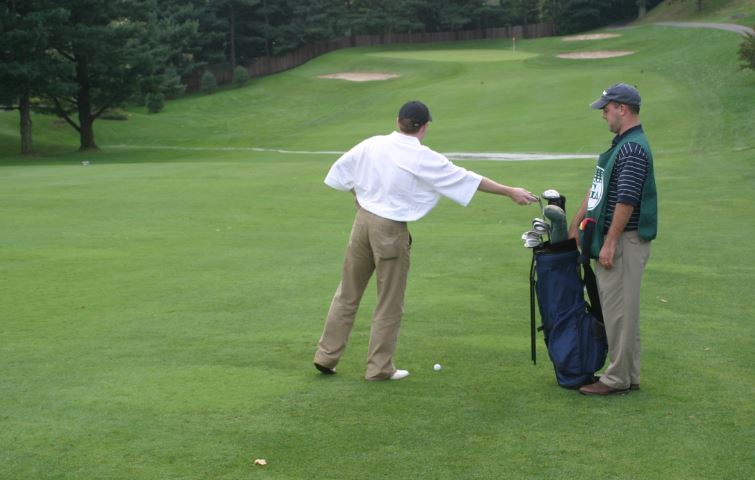
There are two types of golf caddies I mentioned earlier in this post. We have standard caddies and forecaddies.
In my experience, most caddies play a dual role of a standard caddie and a forecaddie.
On longer holes, they stand down the fairway for a clearer view of your ball. They signal to you whether it is safe or not, and you can either reload or prepare for your approach shot.
As for Forecaddies in a professional tournament, this depends on their specific responsibilities.
Some are Professional golf course marshals, and others may be volunteer forecaddies that work on the golf course year-round.

